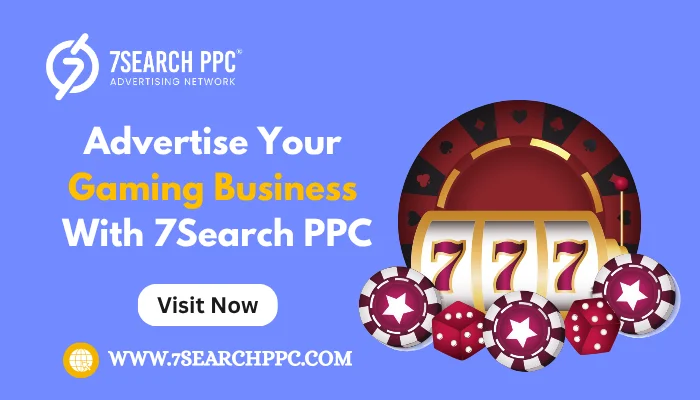In the ever-evolving landscape of digital marketing, in-game advertising has emerged as a powerful channel for brands and developers alike. With the gaming industry expected to surpass $300 billion in value globally, marketers are taking notice. In-game advertising allows businesses to reach highly engaged audiences in a native, immersive environment—making it one of the most promising frontiers in digital advertising.
This article explores the latest trends in in-game advertising, how to advertise your game, and the role of a gaming ad platform in driving campaign success.
What is In-Game Advertising?
In-game advertising (IGA) refers to the integration of promotional content directly into video games. These ads can appear as billboards in a racing game, branded items in an open-world environment, or even as playable content in mobile games. The goal is to create seamless, non-intrusive advertisements that enhance rather than disrupt the gaming experience.
Types of In-Game Advertising
Static Ads: Permanently embedded ads that appear in the game environment (e.g., a soda brand on a stadium banner).
Dynamic Ads: Ads that are served in real-time and can be updated (e.g., seasonal offers on virtual billboards).
Advergames: Entire games built around a brand’s message or product.
Rewarded Video Ads: Common in mobile gaming—players watch an ad to earn in-game rewards.
Product Placement: Real-world products placed naturally within the game (e.g., driving a branded car).
Why In-Game Advertising Is the Future
As traditional advertising channels become oversaturated, in-game advertising stands out due to its engaging format and unique access to key demographics—especially Millennials.
Gaming is Ubiquitous
Gaming isn’t just for hardcore players anymore. Casual gaming on mobile and social platforms has skyrocketed, giving brands access to a broader audience than ever before.
High Engagement Levels
Gamers are fully immersed when playing, often spending hours interacting with the content. This makes them more receptive to ads presented in an organic manner.
Ad Blocker-Proof
Unlike web ads, in-game ads are built into the game’s environment and are largely immune to ad blockers, ensuring better visibility and ROI.
Top Trends in In-Game Advertising for 2025
Programmatic In-Game Advertising
Programmatic advertising is now moving into the gaming space. This means ads are being bought and placed in real time using AI and data, ensuring precise targeting based on user behavior and preferences.
Augmented Reality (AR) and Virtual Reality (VR) Ads
AR and VR offer immersive experiences. As more games adopt these technologies, expect to see more interactive ads that feel like part of the virtual world.
Personalized Ads with AI
Using AI and machine learning, gaming ad platforms are now delivering personalized ad experiences. For instance, different players might see different ads on the same in-game billboard depending on their behavior or demographics.
Sustainability and Ethical Advertising
As awareness around ethical advertising grows, brands are focusing on non-disruptive, user-friendly ad formats. Rewarded video ads and native placements are gaining popularity for being less intrusive.
Cross-Platform Campaigns
With games now played across multiple devices (consoles, mobile, PC), advertisers are leveraging gaming ad platforms that offer seamless cross-platform ad delivery for consistent messaging.
How to Advertise Your Game Through In-Game Advertising
Whether you're a game developer looking to promote your game or a brand aiming to reach gamers, the process requires strategic planning and the right tools.
Choose the Right Gaming Ad Platform
A gaming ad platform connects advertisers with available ad inventory in games. Platforms like 7Search PPC, RichAds, and Unity Ads offer various ad formats and targeting options tailored for the gaming audience.
Define Your Target Audience
Who are you trying to reach? Hardcore PC gamers or casual mobile users? Knowing your audience helps in selecting the right game genre, platform, and ad format.
Opt for Native Integrations
For best results, make your ad feel like a natural part of the game. Whether it's a character drinking a branded energy drink or an in-game billboard with your logo, subtlety enhances brand recall.
Use Rewarded Ads to Promote Your Game
If you're looking to advertise your game, rewarded video ads are a great method. Offer in-game currency or perks in exchange for watching a trailer of your game, increasing installs and engagement.
Challenges and Considerations
Balancing Ads and Gameplay
Too many or intrusive ads can lead to a negative player experience. Developers and advertisers must strike the right balance between monetization and user satisfaction.
Privacy and Data Regulations
As with any form of digital advertising, privacy regulations like GDPR and COPPA must be taken into account when collecting data for targeted advertising.
Conclusion
In-game advertising is no longer a niche strategy—it's a mainstream, high-performing marketing channel with vast potential. As gaming continues to dominate digital entertainment, brands and developers alike must adapt to the shifting landscape. From AI-driven personalization to immersive VR experiences, the future of advertising is being written inside video games.
Whether you're a brand looking to reach new audiences or a developer aiming to advertise your game, leveraging the right gaming ad platform and staying on top of trends will be key to unlocking success in this dynamic arena.
Frequently Asked Questions (FAQs)
What is the difference between static and dynamic in-game ads?
Ans: Static ads are hard-coded into the game and do not change. Dynamic ads are served in real time and can be updated or rotated, offering more flexibility.
Is in-game advertising effective?
Ans: Yes. In-game ads often have higher engagement and recall rates compared to traditional digital ads, especially when they are well-integrated and non-disruptive.
How can I advertise my game using in-game advertising?
Ans: You can use rewarded video ads, partner with other developers for cross-promotion, or use a gaming ad platform to place your game's ads in other popular games.
What are the costs involved?
Ans: Costs vary based on ad format, placement, game popularity, and whether you’re using a managed service or self-serve platform. CPM (cost per thousand impressions) rates typically range from $5 to $25.
Can small developers benefit from in-game ads?
Ans: Absolutely. Smaller developers can monetize their games through ads and promote their own games affordably using rewarded video and cross-promotion networks.






